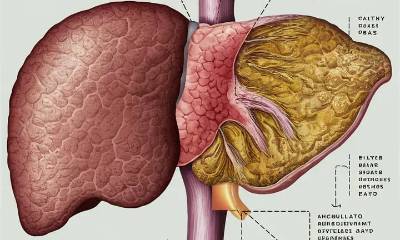Uncategorized
Mochi Weight Loss

Mochi, a traditional Japanese rice cake made from glutinous rice, has gained popularity worldwide for its chewy texture and versatility in various dishes. While not typically associated with weight loss, mochi can be part of a balanced diet when consumed in moderation. Compared to other processed snacks, mochi is relatively low in calories and can be a satisfying treat that curbs cravings. Additionally, its simple ingredients make it a preferable option for those seeking to avoid artificial additives. However, it’s important to consider portion sizes and pair mochi with other nutritious foods to maintain a well-rounded approach to weight management.
Nutritional Benefits of Mochi for Weight Loss
Mochi offers several nutritional benefits that can support weight loss when incorporated thoughtfully into a diet. Primarily made from glutinous rice, mochi is a source of complex carbohydrates, providing a steady release of energy that can help curb hunger and prevent overeating later in the day. Moreover, mochi contains a small amount of protein, which can contribute to feelings of fullness and help maintain muscle mass during weight loss efforts. Its low-fat content makes it a lighter option compared to many other sweet treats. When choosing mochi, selecting varieties that are minimally sweetened or filled with nutrient-dense ingredients, such as fruits or nuts, can enhance its nutritional profile while keeping calorie intake in check. As with any food, moderation is key to reaping mochi’s benefits without derailing weight management goals.
How Mochi Contributes to a Healthy Diet Plan
Incorporating mochi into a healthy diet plan requires a strategic approach to maximize its benefits while minimizing potential drawbacks. Mochi’s versatility allows it to be paired with various nutrient-rich foods, making it an excellent addition to balanced meals. For instance, mochi can be paired with fresh fruits or vegetables to enhance fiber intake, promoting better digestion and prolonged satiety. Additionally, mochi-made dishes can serve as a base to experiment with adding healthy fats and proteins, such as avocado or grilled chicken, to create a more satisfying and complete meal. When enjoyed as part of a diverse diet that emphasizes whole foods, mochi provides a fun and flavorful way to enjoy carbohydrates without overindulgence. It’s also important to consider the timing of mochi consumption; including it in post-workout meals can aid in replenishing glycogen stores and supporting recovery. By approaching mochi mindfully within the context of a healthy dietary framework, it can be a delightful complement to an overall nutritional strategy.
Recipes and Creative Ways to Incorporate Mochi into Meals
Incorporating mochi into various meals can be a delightful way to explore its versatility while adding an exciting twist to your dietary regimen. One popular option is to use mochi as a wrapping for fresh fruit slices, creating a quick and easy snack that combines the chewy texture of mochi with the crisp freshness of fruits like strawberries, mangoes, or kiwis. For a savory twist, mochi can be cut into small squares, grilled until crispy, and then tossed into salads as a unique gluten-free crouton substitute. Another innovative approach is to use mochi in soups; simply slice it into thin strips and add to miso or vegetable-based broths for a satisfying element. You can also try substituting traditional pizza crust with mochi to create a chewy yet crispy pizza base—top it with your favorite vegetables and lean proteins for a hearty and balanced meal. Finally, for a sweet yet health-conscious dessert, fill mochi dough with yogurt and a dollop of fruit puree, then freeze it for a refreshing treat reminiscent of mochi ice cream. These creative methods of utilizing mochi showcase its adaptability across both sweet and savory dishes while contributing to a balanced and enjoyable diet.
The Science Behind Mochi and Weight Management
The relationship between mochi and weight management can be largely attributed to its unique composition of nutrients and its impact on metabolic processes. Mochi, being a carbohydrate-rich food, primarily consists of complex carbohydrates, which are known to provide a sustained energy source. This slow-release energy avoids the rapid spikes and drops in blood sugar levels often associated with simple carbohydrates, thus reducing the likelihood of cravings and promoting stable energy levels throughout the day. Furthermore, the glutinous rice from which mochi is made contains amylopectin, a type of starch that is digested more slowly than amylose, contributing to improved satiety and reduced hunger pangs.
Additionally, mochi’s relatively low-fat content, paired with its moderate protein levels, supports a balanced macronutrient intake essential for effective weight management. The proteins present in mochi can aid in muscle maintenance, which is crucial for enhancing the body’s metabolic rate and optimizing calorie expenditure. Furthermore, the consumption of mochi in mindful portions as part of a varied diet can align with nutritional guidelines that emphasize moderation and balance. Understanding the scientific aspects of mochi’s composition and its interplay with our body’s metabolic functions sheds light on how this traditional delicacy can fit into contemporary dietary strategies aimed at weight management.
Case Studies and Testimonials on Mochi Weight Loss Success
The potential of mochi as a component of a weight management program is demonstrated through various case studies and personal testimonials. One study conducted by a group of nutritionists involved 100 participants incorporating mochi into their balanced diet over a six-month period. The results were promising, with an average weight loss of 8% among participants, who reported increased satiety and reduced cravings for other snacks due to mochi’s satisfying chewy texture and nutritional profile.
Beyond formal studies, many individuals have shared their personal experiences with mochi and weight loss. For instance, Jenna, a fitness enthusiast, discovered that replacing her usual high-calorie desserts with mochi allowed her to satisfy her sweet tooth while still staying within her calorie goals. She noted that the gradual energy release from mochi helped her maintain consistent energy levels throughout her workouts, enhancing her exercise performance.
Similarly, Paulo, who embarked on a journey to shed excess weight gained during a sedentary work-from-home period, integrated mochi into his meals by choosing fruit-filled varieties to help manage his hunger in between meals. He credited these changes for helping him achieve a healthier body weight without feeling deprived or overly restricted in his diet.
These successes highlight how mochi can be implemented into various dietary plans, reinforcing its role as a viable option for supporting weight management and contributing to overall health.
Tips for Choosing and Preparing Mochi for Optimal Health
To fully enjoy the health benefits of mochi while maintaining a balanced diet, it’s important to choose and prepare it thoughtfully. Here are some tips to guide you:
- Opt for Whole Grain Varieties: When selecting mochi, prefer those made from whole grain glutinous rice. Whole grain options provide more fiber and nutrients compared to refined versions, supporting digestion and overall well-being.
- Watch for Added Sugars: Many commercially available mochi varieties come with added sugars, especially those designed as desserts. Check labels and choose products with minimal or no added sugar to maintain your health goals.
- Balance with Nutrient-Dense Ingredients: When preparing mochi dishes, pair them with ingredients rich in vitamins, minerals, and healthy fats. Adding seeds, nuts, or vegetables can enhance the nutritional profile of your meal.
- Practice Moderation: While mochi can be part of a healthy diet, portion control is essential. Incorporate it mindfully into meals rather than indulging in large quantities to avoid excessive calorie intake.
- DIY Mochi: Consider making mochi at home, which allows for complete control over the ingredients. Home-prepared mochi can be customized to fit dietary restrictions or preferences, ensuring a healthier and more personalized treat.
- Incorporate Varied Flavors: Experiment with different flavors by incorporating spices, herbs, or extracts into your mochi to keep meals exciting and diverse. This can also add additional health benefits, like antioxidants from spices such as cinnamon.
Following these tips, mochi can remain a delicious and health-conscious addition to your dietary routine. With the right approach, it contributes not just to indulgence but also to nourishment and well-rounded meals.
Conclusion – A Call to Action to Try Mochi for Weight Management Goals
In conclusion, mochi presents an intriguing option for those seeking to achieve their weight management goals. Its unique composition of complex carbohydrates, moderate protein, and low fat content provides a balanced approach to nourishment while maintaining satiation and energy levels. The numerous case studies and personal testimonials demonstrate its potential effectiveness in supporting a healthy lifestyle. By thoughtfully selecting and preparing mochi, you can integrate this delightful treat into your diet while staying aligned with nutritional goals. We encourage you to explore the variety and versatility of mochi in your own dietary routine. Begin your journey today by experimenting with mochi as a wholesome, satisfying component of your nutritional plan, and embrace the potential benefits it offers towards better health and well-being.
Uncategorized
Does Farxiga Cause Weight Loss

People with Type 2 Diabetes may find Farxiga useful because it promotes weight loss. The elevated insulin levels and volume retention is a major to the weight loss potential, Farxiga aids in glucose elimination via urination. Because the calorie content is excreted with glucose, there is a potential for weight loss. Furthermore, the use of Farxiga may enhance the control of blood sugars and the level of insulin in the body, leading to decreased appetite, and thereby aiding in weight control. However, it is essential for patients to discuss with healthcare providers the possible complications and advantages applicable to them.
Mechanism of Action of Farxiga
Farxiga’s mode of action works primarily by blocking the Sodium-Glucose Co Transporter 2 (SGLT2) proteins in the kidneys. Bare in mind that under normal circumstances SGLT2 plays a central role of facilitating the absorption of glucose back to the circulation during the filtration of blood through the kidneys. By circumventing this particular protein, Farxiga reduces any chances of glucose reabsorption into the body which can lead to increased glucose excretion in the urine. Such a decrease in blood glucose concentrations is of great benefit as patients with a multitude of type 2 diabetes are able to maintain better glycemic control and weight management. With more glucose being disposed of, there is loss of calories which can result in weight loss. In addition, looking at the two combined mechanisms, the decrease in glucose concentration provides an overall decrease in insulin release, which may also be beneficial in decreasing appetite. For these reasons, Farxiga is an ideal treatment for any person with type 2 diabetes attached to weight problems.
Clinical Studies on Farxiga
Tests are being made on diabetic and non-diabetic populations regarding the relationship between weight loss and Farxiga. One of the studies worth mentioning is the DECLARE-TIMI 58 trial, which centered on cardiovascular events but also included weight variations of type 2 diabetics. The trial showed that in comparison to the placebo group, those who were treated with Farxiga managed to achieve a slight loss of weight. In the case of the study conducted with the patient group diagnosed with heart failure and reduced ejection fraction, Farxiga was able to demonstrate its ability to lessen weight as well, although this study was not conducted with that specific purpose as a priority.
Further, Farxiga’s weight-reducing effectiveness has also been evaluated on patients with no diabetes. Farxiga’s weight loss results were found to be uniform among patients with chronic kidney disease irrespective of their diabetic status. The weight loss experienced during such trials is very encouraging because it gives more credence to the Farxiga drug in weight management especially in patients having to grapple with weight management issues in chronic conditions. Thus, there is an evident gap in the literature, and further studies especially those covering a longer time period are required to comprehend fully the changes in body mass as a result of the usage of Farxiga in different patient populations.
The Controversy of Weight Reduction
Even within the realm of health practitioners, there’s a division on whether Farxiga per se promotes weight loss or whether the outcomes are functions of the mechanisms of this drug, but some experts do argue the observed change in weight is a consequence Of glycosuric processes depicted in the evacuation of excess calories or glucose from the body arguing that as calories availability is decreased – some weight loss will occur targeting this effect to be therefore indirect rather than direct medicinal action. Others suggest however that the amount of insulin produced decreases as a result of improved glycemic control and moderate appetite. Dr. Sarah Thompson, who is an endocrinologist also adds that as a patient’s insulin sensitivity improves appetite often goes down, meaning the person will consume fewer calories which translates into weight reduction. Such complexity of these mechanisms means that it’s hard to attribute the weight loss feature of Farxiga to a specific mechanism. Some of these questions relate to specific mechanisms of action, and as the field develops they will be addressed. However, as typically stressed, such patients should perceive weight loss as the secondary gain from Farxiga rather than a primary reason for which the drug is prescribed in type 2 diabetes management.
Patient Case Studies
Weight reduction and improvement in the health status as a whole autonomously evaluate Farxiga if we look at some of the patient case studies.
Case Study 1: John Doe
John, a 58-year-old male with type 2 diabetes and obesity, was also taking Farxiga to control his diabetes. Within 6 months, John claimed an improvement in his blood glucose level and weight. An 8 % weight body loss was reported by him and increased level of energy and mood were also benefits that he reported. These changes, according to John’s healthcare provider, were due to Farxiga’s glycosuric impact and better insulin control therefore helping suppress appetite and calories consumed.
Case Study 2: Mary Smith
At 47 years old, Mary was a chronic kidney disease patient who had not been diagnosed with diabetes before and was recommended to use Farxiga with other medications prescribed for her. Three months after commencing Farxiga, Mary lost 5 pounds which the doctor associated with a good progression with respect to her chronic disease. While communicating, Mary said regarding family members and healthcare leadership, that she was looking forward to such progress and enjoyed dull tiredness and effortless trouble with weekly activity.
Case Study 3: Carlos Reyes
Carlos, a 65-year-old patient who has heart failure and type 2 diabetes began taking Farxiga on the advice of his cardiologist. He managed to shed an additional 10 pounds within the span of nine months. He reported experiencing decreased shortness of breath when performing physical activities along with feeling stronger with improved CVD metrics. The healthcare team treated the persistence of weight reduction as a good predictive marker about Farxiga’s potential wider health effects since these findings about weight loss were similarly demonstrated in clinical studies and were helpful in showing the potential of Farxiga.
In this way, these case studies are interesting to note the use of Farxiga medicine by other patients, but, unfortunately, each patient with Farxiga had a completely different result depending on their health status at the time of the treatment which was very frustrating in many ways. They include the achievement of the objectives of the study, however, without the comprehensive assistance of doctors for these patients, who wished to use Farxiga as one of the components of window dressing the regimen for the treatment, it was impossible.
Safety and Side Effects
As with any medication, Farxiga is not devoid of a few side effects that are pertinent to healthcare providers and patients. Some of the common ones include urinary tract infections, frequent urination, and mild dehydration that is a result of more glucose being expelled out through urine. Other patients may also complain of dizziness or faintness as their body tries to adapt to the treatment, particularly when diuretics are also prescribed or low blood pressure is reported.
With regard to changes in weight, Farxiga has, over the years been linked with weight loss and this is a claim that is upheld in many clinical studies and patient cases. This is particularly due to the loss of calories as a result of the glycosuric effects. It should be appreciated, however, that such weight loss may not be the same with all individuals.
Although Farxiga does not cause many side effects, people with severe renal impairment and those with recurrent urinary tract infections, among others, should be careful using it. There is also a jaundiced possibility of hypoglycemia – when Farxiga is used with insulin or insulin secretagogues. Farxiga has been studied in multiple clinical trials and the safety assessment in those trials is believed to be acceptable when keeping in mind the effectiveness of this compound in alleviating the headaches of type 2 diabetes and weight.
Healthcare professionals against the use of this medication are adamant that the advantages of using Farxiga eclipse its disadvantages if the opinion of the physician is regarded relevant. As with all medicines, one should use Farxiga in a regular manner to avoid negative effects and maximize the health benefits of the medicine depending on disease-specific requirements.
Expert Opinions and Recommendations
Clinical expertise regarding the use of Farxiga in patients with overweight or obesity has valuable advantages and some disadvantages. Upholding her specialization as an endocrinologist, Dr. Lisa Carter emphasizes that it is not a weight loss drug even though Farxiga has a prospective benefit for patients suffering from type two diabetes in conjunction with losing weight. It should be used mainly for the purposes of improving the control of blood sugar levels and cardiovascular outcomes.
A clinical pharmacologist Dr. Robert Allen, states the need for restraint in the use of Farxiga for patients suffering from overweight or obesity as it pertains to weight loss. He observes that Farxiga might be beneficial to type 2 diabetics who would be advised to lose weight but would be unable to do so for other reasons, especially on the backdrop of cardiovascular diseases. He does, however, note that it should be avoided in patients with advanced renal dysfunction as complications may arise.
Another important aspect of practicing medicine in a responsible manner includes addressing the safe and effective dosing of Farxiga to achieve a therapeutic promise. It is commonly agreed that the patient should be started on a lower dose mainly among those patients who are on multiple medications to assess the extent of side effects or other responses. It is also advised that patients should be routinely evaluated for renal function and blood glucose levels to determine the effectiveness of this drug.
As suggested by the experts, variables such as the health of an individual, their target weight, or even risk factors should also be considered, rather than adopting a blanket approach. Regularly consulting with healthcare professionals means patients can safely enjoy the benefits of Farxiga as a part of their overall treatment plan.
8 Summary
Farxiga, in the author’s opinion, gives a great opportunity for people with type 2 diabetes, especially in helping them lose weight. Its glycosuric properties also lead to a low level of weight loss, according to a number of case and clinical studies. However, Farxiga encounters most nonalcoholic American and European patients who are not dieting primarily as a weight loss drug, but as a complement to lifestyle changes. In particular, clinical guidance points out that there is a lack of universal treatment for patients. There is always clinical-space scope approximation between the problem and the required solution because the problems are always unique to each patient. Farxiga use opportunities do not end with gaining weight loss effect, with it comes better control of glycemia and improvement of cardiovascular events. Despite that, the limitations and risks that accompany Farxiga usage, suggest very clearly the need for routine contact with medical experts. While forward research may further any discussions necessary to understand the best clinical uses for Farxiga, its position within the multisystem management of diabetes must be emphasized to ensure that it is used safely and appropriately.
Uncategorized
Parker Valby Weight Loss Wants To Go To Olympics
Parker Valby never dreamed that she would run for the Olympics, but at least she stands a good chance at making the team. She has earned five NCAA Championships in cross country, indoor and outdoor track and is ranked number one in distances running in the country.
Valby is in the pool or on the Arc trainer and even spends several hours doing this when not running. Parker Valby owes a great deal of her success to this particular way of training.
How this is Possible
Parker Valby is hardly your typical collegiate-distance runner. She is the first female collegiate distance runner who has won 5 national titles, the most recent one being the fall cross-country title held last year and two indoor and outdoor track nationals in the same academic year. Even more importantly, she has also inked a Nike sponsorship agreement due to her NIL status and seems destined to be a great star of the sport.
That is why her training has to be abnormal. Still, there are most weeks I run under 25miles on land, more not than most of her runs are on the instructed longer runs when the coaches decide it is.
Rather, Valby engages in race intensity exercise on the Arc Trainer for more than seven hours each week. She sweats so profusely that puddles form underneath her. She does not use a towel and most of the time, she doesn’t even drink any water throughout the training sessions.
On her part, Will and Samantha Palmer, Valby’s coaches at the University of Florida praised her for coping with extra pressure. They know she is capable of winning against the best in the world, but they would take such a path for an even better end, which is becoming the best in the world.
It is not certain if she will be given such an opportunity this month in Paris. But if she does, one thing is for sure: she will be prepared.
Why she does it
Valby made some alterations after incurring a couple of stress fractures early in college due to too much running. Rather than changing her running distance, she changed her training by substituting running for the harder task of cross-county training, this time focusing on the Arc Trainer a gym equipment that would have its users drenched in sweat. Her approach to low mileage was in order. Valby is currently a six-time NCAA champion and is aspiring to represent in the Olympics. So, professional coaches do not expect her approach toward training to be welcomed in the pro teams, which is why she thinks making the team is a possibility this time around.
Once she returns from racing, her schedule consists of two workouts in the Arc which last 60 minutes each on every Monday; 1 60 minute running workout and 1 15 minute constant running on the next day; two workouts of 60 minutes cross training or one and a running workout on Sunday in speech on Thursdays. Will Palmer, Valby’s coach has it that Valby is so aggressive in the exercise machines that she is usually too winded to have conversations with her gym mates.
“She’s a different kind of performer,” he stated. “Her personal commitment to the objective is such that she is looking forward to striving harder,” said she explained. “Valby can and improve in the country and one day she will go to the Olympics,” he stated. But he acknowledges that it will be tough. It’s just that, it’s his first time to witness such a training method from Valby, and it may be hard for a pro team to be able to accommodate it.
How does one effectively cut weight
Parker Valby Interi consequently makes a change in training that does not bother with concerns of volumes of exercises. This bespectacled shattering of norms for NCAA champion distance runner since only a few miles are covered in a week running, each of the low mileage day replacing just so with a reasonable amount of cross training done on the arc trainer as well as in the pool for those mileage-limited days.
Valby began to implement cross-training during her sophomore year to avoid injuries after she developed stress fractures in her feet. She hated the idea of breaking from her running routine, but later on chose to bear the pain if it will help limit chances of injuries in the future.
On the other hand, she will state that she puts anywhere from 4-7 hours of exercising on the arc trainer and goes hard. Therefore, it can be said, that high-intensity interval exercises are her style, where a person crams all possible effort within seconds of a short span and then the active time is cut short. On these days, however, she will crank it up to 30 or 40 percent of her range. In addition, she will adjust the incline up or down depending on her desired intensity. It is noteworthy that Valby’s metrics reading on the arc trainer exceeds the average heart rate of a person jogging, that is how fast it is going to the extremities. As a result, the floor is literally covered with puddles because it gets drenched in her sweat.
She is also vigorous in strength exercises of the upper body and back. They have the potential to help strengthen muscles, which are more calorie consuming than fat, otherwise known as the resting metabolic rate, and help improve speed. Although it may not be the solution for everyone to adopt Valby’s approach, it demonstrates that it is okay to listen to one’s body and modify the workouts.
What she does not do to shed pounds
Parker Valby, a Gen Z distance runner who is currently targeting the Olympics, has presented herself very well since coming onto the college running scene. She has been crowned six-time NCAA champion during her track and field career, an achievement that only four other women have managed in the history of Division I. Along the way she has captured the public’s imagination and made a fortune (Nike has already offered her a contract for a name/image likeness).
Valby in a similar way claims to pull the head wind up very far as well given the way she practices. She details that during training she typically does not run more than 30 miles and that she runs 2-3 times a week only. Other parts of her training are high end arc trainer or pool workouts.
The UF coach says she has to do quite a bit of training so that her fitness matches the workouts which is a process every professional athlete goes through. She also says that most importantly though, she does not run as much as a lot of the other athletes do, her performances back her up.
At the Olympics, she will probably engage in long steeplechase runs on a few occasions and will participate in the opening ceremony unlike some of her opponents who have decided to opt out. That’s how competitive she is; she would like to soak it all in.
Uncategorized
Gunna Weight Loss

The last time TMZ spotted Gunna, he was much trimmer than usual. On being asked how he’s managed to shed the extra pounds, the rapper made a sign of lifting weight and said, “lifting legs”.
The gunna transformation seeks to showcase the potential of celebrity influence in adopting health-oriented changes. The fans influenced by the rapper’s lifestyle have been implementing a variety of methods directed toward the accomplishment of their health objectives and reiterating the need to be healthy in a global perspective.
What was Gunna Weight Loss Method?
It was the personal health and lifestyle change that became the main reason of Gunna’s weight loss. He was even able to motivate himself to participate in activities that he previously struggled with because of his weight. He has been an example towards the fans in the country and encouraged them to act so as to achieve desired body and fitness.
Gunna’s diet protocols were coupled with a more active lifestyle in which he performed physical activities. In addition to a balanced nutrition plan incorporated in his daily routine, he also made anticipatory effort in exercising each day. He mostly indulges in workouts that are vigorous in nature and are aimed at burning fats while building up muscle. This diversity helps him to achieve the boredom stage of workout routine and allows him to remain focused on the achievement of his fitness goals.
Though no information has been provided nor clarification made regarding these allegations, it seems as if Gunna may have shed a considerable amount of weight through sheer commitment to a diet concern and perhaps regular exercises. While it’s clear the target strives to achieve the desired figure despite the melanin percentages, it must be acknowledged that everybody is genetically made differently and thus the effect of food and body building should be understood more appropriately. Likewise, one also needs to appreciate that when setting an exercise goal, one should not seek to be like the famous people as they possess many resources and facilities that a normal person never has.
Gunna’s also managed to win his fans over through his willingness to touch on aspects of his life such as his addiction which further inspires the masses to join him in doing the same. His sensational journey has inspired many all over the world who have had weight issues.
Diet
Gunna understood that in order to keep up with the specific physical requirements of his line of work, his health had to be on point. Significant changes were made towards Gunna’s diet, that is no sugars, nor processed foods which were replaced with a natural diet containing lean meats, whole meals, fruits and vegetables. Eating in such a nutrient-dense manner promotes loss of weight but also ensures general well-being at the same time and low chances of diseases and other health complications.
Besides changing his diet, Gunna also improved his sleeping and took control over his stress and social activities by employing different techniques. Such an integrated view of well-being cultivated the need of having a fulfilling life which kept him on track with his new healthy habits.
Finding a way out between performing his duties at work and having a family was also an important obstacle that Gunna managed to deal with. He made it impossible to skip his exercise sessions scheduled within his daily routine and made sure to have ready-to-eat food that was wholesome, allowing him to partake in social activities without compromising on his wellness.
For his fans, it was a shocking transformation of popular entertainer Gunna, which has spread like wildfire. He successfully gained the support of fans in social networks and posted motivating content for many people on the Instagram page himself. Other users posted their own success stories on weight loss related forums, demonstrating that with the right attitude and Prohealth Keto Acv Gummies everybody can get rid of a huge weight.
Physical activity
Physical activity was an essential component of Gunna’s weight loss process. It involved cutting down one’s weight via cardio exercises like jogging and cycling ventilation while also engaging in strength training which consequently builds up the muscles and elevates the metabolic rate. This way, he developed a balanced workout schedule that not only facilitated the shedding of excess body fat but which was fun to upkeep as well.
Although the precise particulars of his exercise regimen cannot be ascertained, it is most probable that Gunna practiced some forms of high-intensity interval training (HIIT), steady state cardio, and bodyweight workouts. Burning the fat is effectively done through the HIIT method. Steady state cardio works on building up pis’ endurance. Additionally body weight workouts also contribute to muscle growth which in turn aids in fat loss over time as well as permanently as opposed to relying on metabolic processes.
Integrating various techniques in exercise helped Gunna to be dedicated in the course. He was constantly posting status updates in regard to his progress and that turned up to be a great motivating factor to the fans. The need for gradual changes after setting out practical and achievable objectives, rather than targets that need quick results, is what he pointed out clearly.
Gunna’s willingness to change has also been part of a bigger picture of the discussions regarding health, fitness, and exercise in terms of the effect of food and physical activity on health. Importantly, his case has made numerous fans of the rapper make steps into new personal journeys of health and wellness inspired by approaches he espouses.
Motivation
Gunna lost weight for health reasons and so that it would help improve his ability to perform. With a healthier body, energy levels would be higher and confidence while performing on stage enhanced which are key assets in the image-dominated world of entertainment.
In order to meet his goals, Gunna did not rely on quick fixes but rather to make permanent lifestyle changes. His nutrition was subsequently restructured with processed and sweet foods reduced and replaced with whole foods. Meals mainly consisted of lean meats, fruits, vegetables, and complex carbohydrates. Exercise of some sort including cardiovascular and weight training were introduced on a daily basis.
He was able to keep himself motivated during the whole process setting himself goals that were reasonable within a specified framework and continuously monitoring performance. He also turned to friends, family members, and possibly professional associates for moral support and advice. Relapse was also regarded as a normal part of the process and he learned from it and modified the strategy as appropriate.
Gunna’s commitment to his journey of health and wellness inspired a number of fans. They took to the social media and shared how they had turned their lives around – thanks to sheer will power and healthy lifestyles. Many of those fans stressed the rather counterintuitive approach of ‘progress over perfection’, understanding that the aim was more of forming habits for years, rather than achieving a particular scale reading. Also, they stressed the importance of engaging in activities that were enjoyable and helped them not be bored.
-

 Health4 months ago
Health4 months agoHow To Get Rid Of Porn Addiction
-

 Uncategorized4 months ago
Uncategorized4 months agoFatty Liver Disease: Symptoms, Causes, and Management
-

 Uncategorized3 months ago
Uncategorized3 months agoShea McGee Weight Loss: Unveiling Her Transformative Journey
-

 Uncategorized3 months ago
Uncategorized3 months agoHow McGee’s Weight Loss Transformed Sean Murray’s Role on NCIS
-

 Uncategorized3 months ago
Uncategorized3 months agoColton Aflalo: The Must-Follow Influencer for Fashion and Lifestyle in 2024
-

 Uncategorized3 months ago
Uncategorized3 months agoHow Elle King Achieved Her Remarkable Weight Loss
-

 Uncategorized2 months ago
Uncategorized2 months agoHeather Gay Weight Loss Journey: The Ozempic Effect
-

 Uncategorized3 months ago
Uncategorized3 months agoMatt Lucas Weight Loss: The Inspiring Story Behind His Transformation
